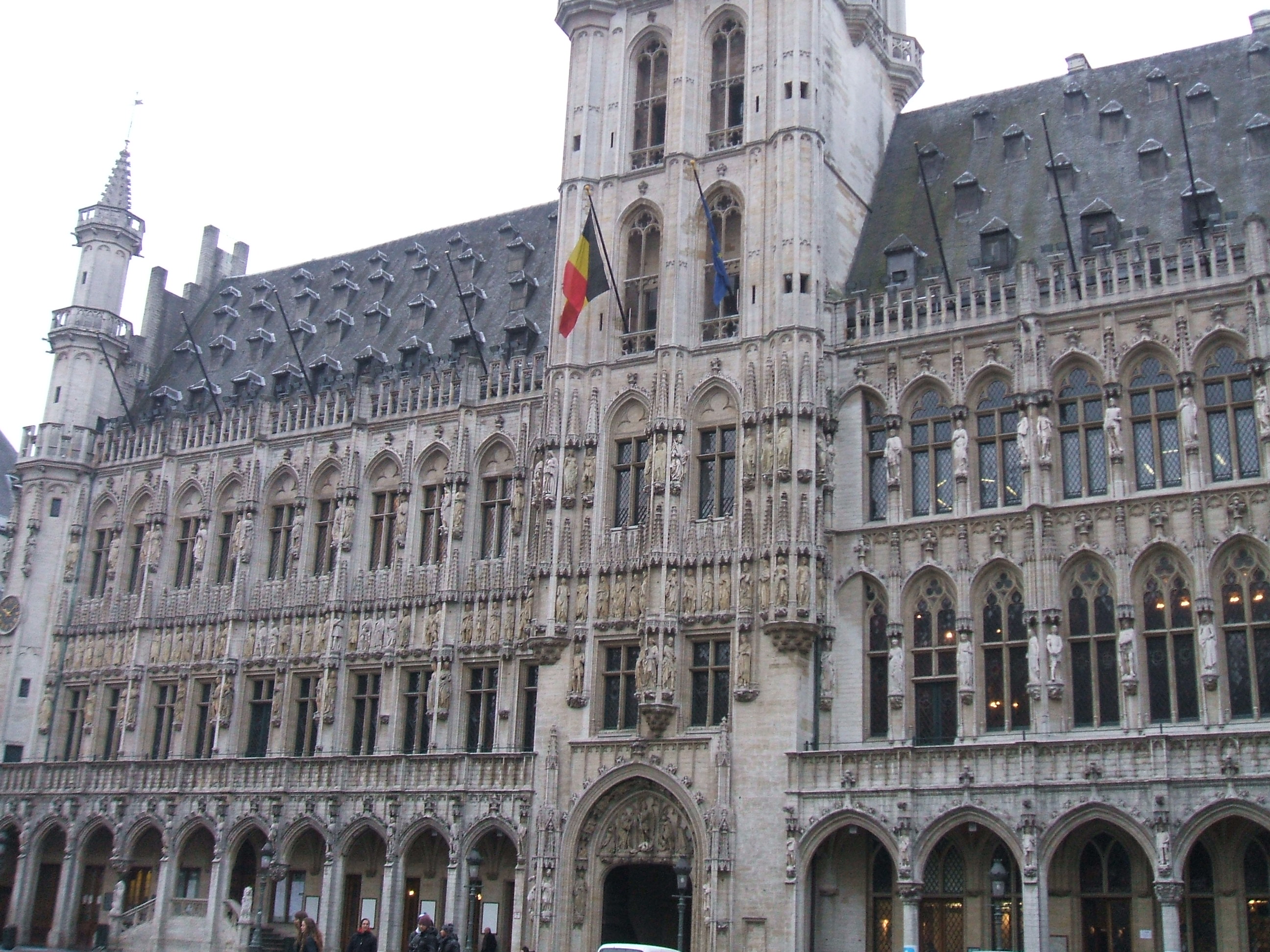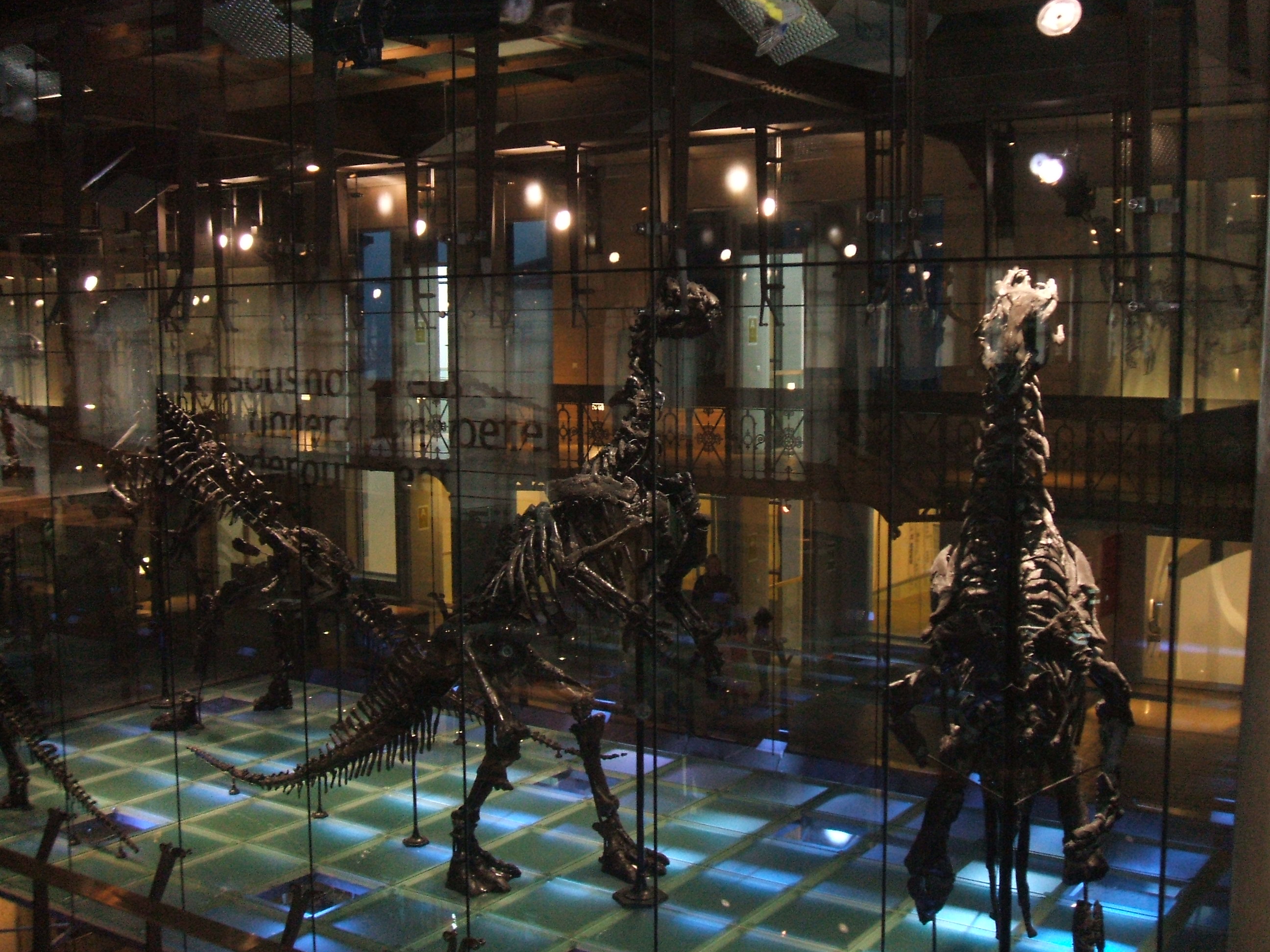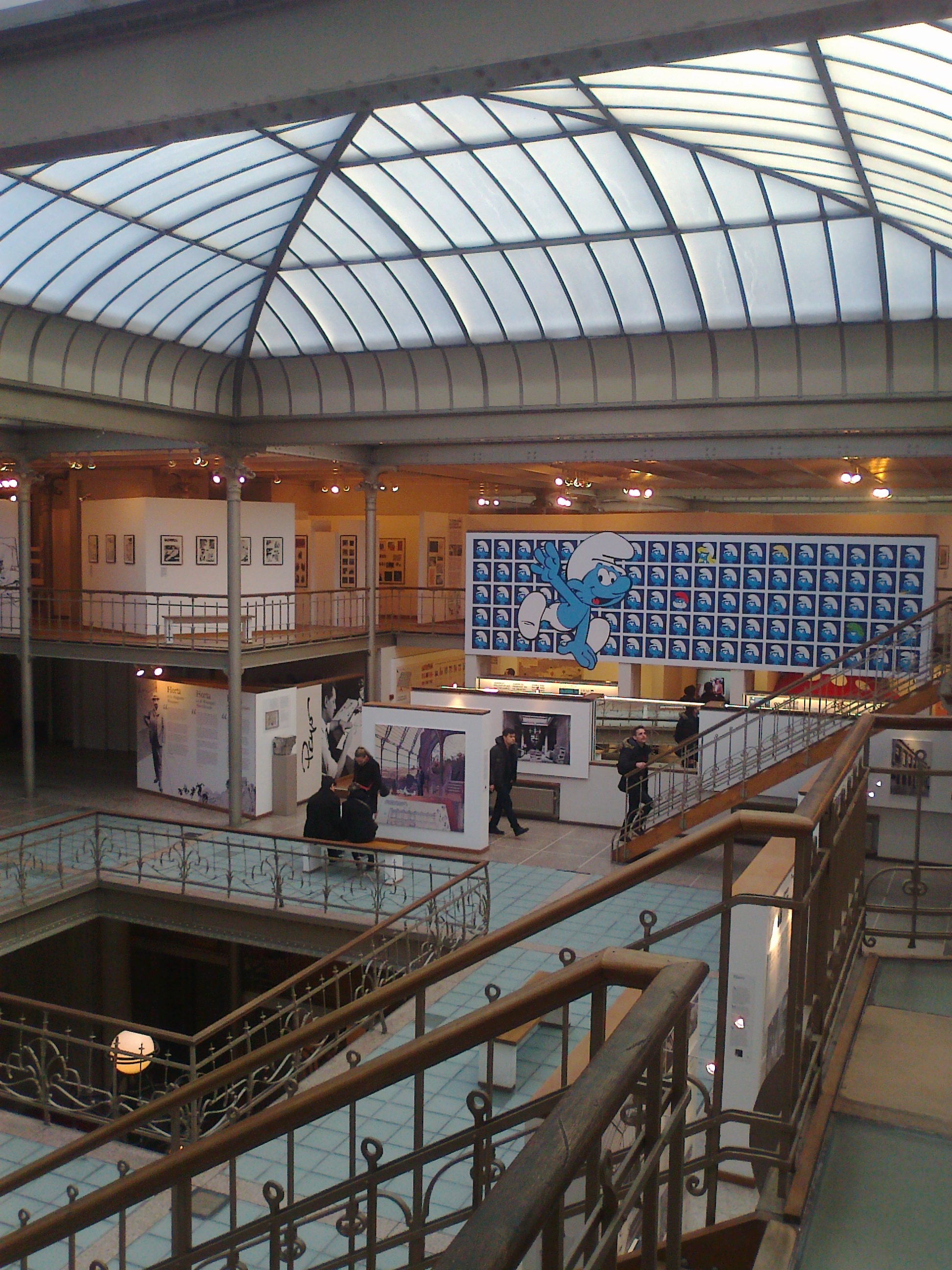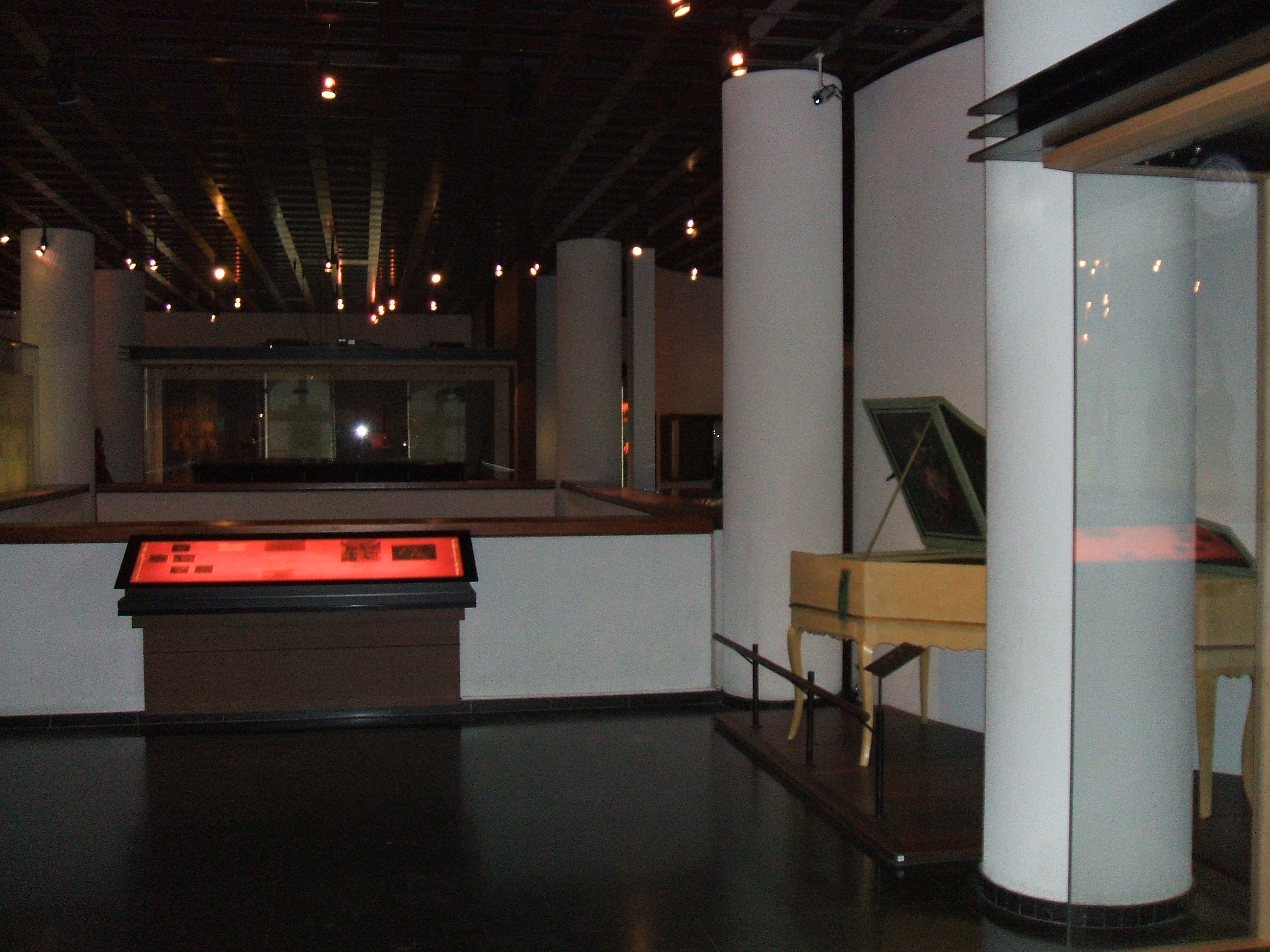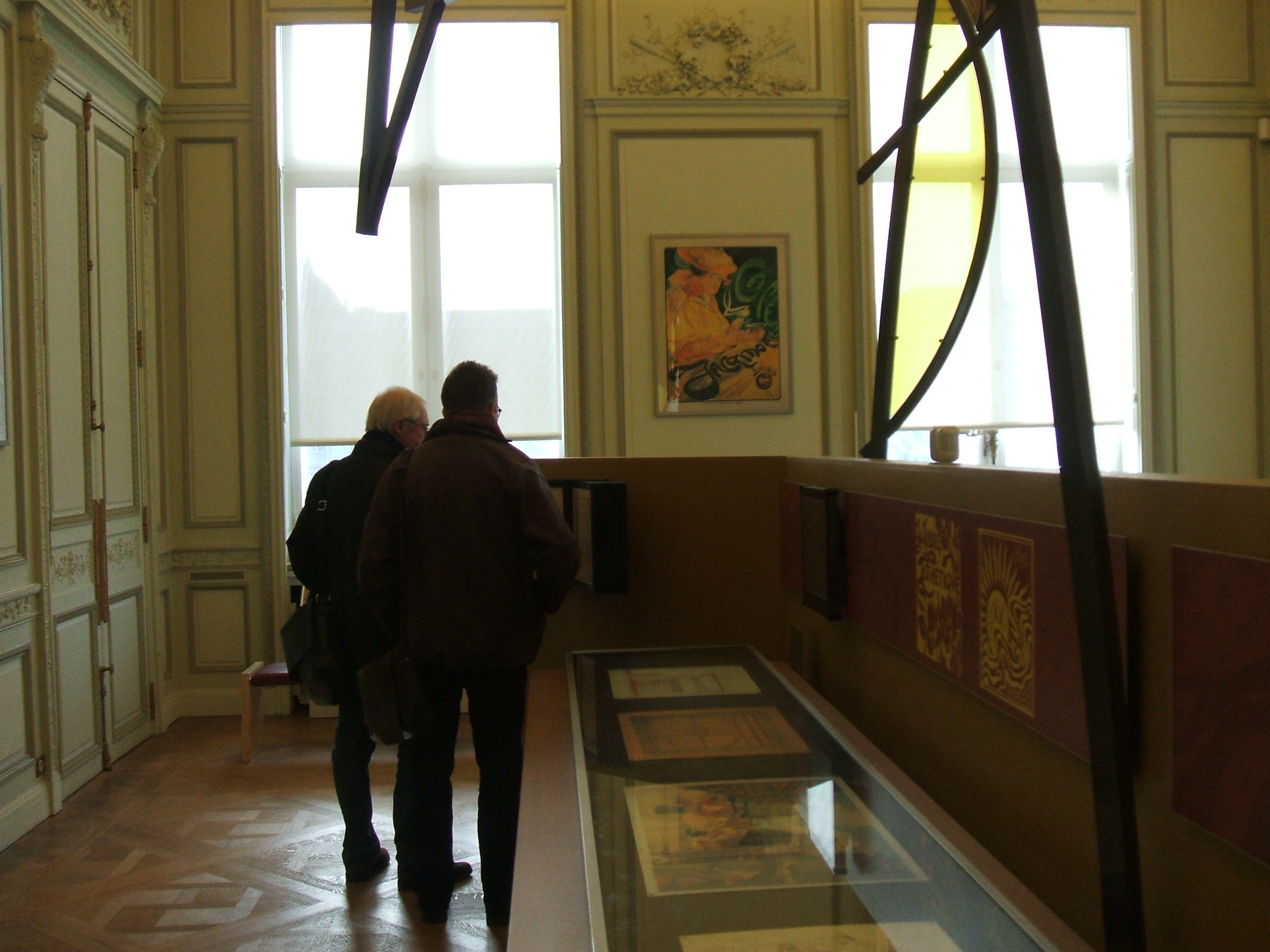This is a report written by David Juler and Will Heppa. David works at the Museum of Oxford, a local authority run museum in Oxford’s Town Hall, as a Museum Development Assistant. David is also on the committee for the South and East Museums Federation. Will is a Museum Assistant for Colchester and Ipswich Museums, a jointly-run local authority museum service. David and Will were both fortunate enough to receive funding for this trip from the South and East Museums Federation via the Martin Howe Bursary. This £200 bursary, which can be applied for by any person who is relatively new to their career in the heritage sector, helped to cover the costs of travel and accommodation and is available every year for the Study Trip.
Introduction
Brussels is well known for being the home of the European Parliament, but perhaps not so widely renowned for its museums. The city, however, plays host to a panoply of museums, boasting of having around 100. So, what better place to go away with the South and East Museums Federation (SEMF) for a study trip? As relatively new members to SEMF we did not really know what to expect, but with peers from a vast array of museums and heritage sites (Cogges Farm, International Garden Cities Exhibition, and Gressenhall Farm and Workhouse to name but a few) it was always going to be an interesting opportunity in which to network and discuss the sector, whilst also getting to meet our counterparts in Brussels and hear what they have to deal with and offer. The following aims to ‘relive’ those museums we visited as well as those conversations we had with our counterparts in Brussels. The aim is not to act as reviewers of museums, there will not be any ratings, just musings on what struck us during this trip as being particularly interesting. Brussels is certainly a city worth visiting and we hope to recapture why this varied and actually quite complex place is a fantastic location to tell not just a history of a capital but also a country.
Brussels City Hall in the Grand Place
Wednesday 21 January – The First Night
David Juler
The first evening of a SEMF study trip traditionally kicks off with an ice breaking and welcome meal. Josh, president of SEMF, had booked us in to a well rated Italian restaurant 10 minutes’ walk from the hotel called ‘Spago’. There we were introduced to each other, there were eleven of us in the group in total, and ate some fine Italian cuisine. Sharing stories of travel issues (Eurostar being cancelled/delayed, similar difficulties with the Brussels’ metro system) the wine and beer flowed with discussion of a previously mooted idea, a National Food Museum, being a key focus of conversation. I fear however this point may be redacted due to the idea being one of SEMF’s closest guarded secrets…
Back to the hotel to sleep as we would be up early to hike across the city to our first of Brussels’ museums.
Thursday 22 January – The Royal Belgian Institute of Natural Sciences (RBINS)
David Juler
A rather grand name, and a little bit of a mouth full, the Royal Belgian Institute of Natural Sciences is, I think it would be fair to say, fairly off the well-trod, tourist path. It is out of the centre of the city to the east. We walked and took in many of the sites of Brussels on the way as well as enjoying the rather brisk (Arctic cold) weather.
My first impressions on arrival were of a rather large (we had just walked through the European Parliament’s colossal concrete jungle) ugly looking building. The plastic Iguanodon, with festive woolly hat and gloves (surely bad luck? Perhaps the twelfth night rule doesn’t apply to dinosaurs) confirmed that we were at the right place making a fairly unassuming building, manifest. Inside we were met by Hans who was an Education Officer for the Flemish speaking side of what is on offer. Interestingly, we learnt that Hans and his French speaking counterpart do not necessarily offer exactly the same educational service. Schools in Brussels choose to either use French or Flemish. Brussels is officially bilingual which makes it unusual in Belgium with most regions being one or the other. I wondered whether it was similar in other bilingual countries, however it seemed strange to me that children may have access to certain educational services from a museum dependent on the language they, or their school, speak.
We then met the conservator of the entomology collection, Wouter Dekoninck. Wouter went on to explain that the entomology collection holds around 15 million species with 15 thousand type specimens. It was clear that Wouter had caught the bug at an early age, a fascination with ants being well attested to on the museum’s website where we can meet Wouter being introduced as ‘The King of the Ants’. It was an impressive collection. Rows and rows of wooden cases filled with more wooden boxes with precisely written labels and precisely skewered insects. Some small, some very small, some terrifyingly large. We were also privy to a volunteer working away at recording and examining specimens. Probably the most interesting aspect for me of this behind the scenes tour of the entomology department was to see this volunteer and hear his story from Wouter. He had been a retired gentleman who had been looking for something to do, helping in the entomology department piqued his curiosity and he, clearly, fell in love with the subject. Wouter explained how the volunteer was now one of the leading researchers in a particular bug species. I felt it was refreshing to hear that a volunteer was trained and trusted with that responsibility and obviously had accomplished a lot, it also made me reflect and fret about how volunteers are treated so differently from one institution to the next. I found myself considering levels of dependence and the concern this can bring (in this case if the volunteer decided not to come in, the RBINS would, truly, be losing a professional) versus giving volunteers what can be seen as low risk, sometimes mundane tasks.
Hans led us on a tour of the museum and described everything from the addition of the 70s build, the introduction of dinosaurs and the former uses of the older part of the building (from chapel, to zoo, to museum). The Iguanodons are really worth a mention. Kept in colossal glass cases, with a balcony to view at a higher level, these beasts are really fantastic specimens. Hans explained that many were almost complete and that some were so well preserved you can still see fossilised ligaments and tendons. Thirty of these Iguanodons were discovered in all and those on display are in various positions. However, the most apparent ‘inhabitants’ of the museum were the many school children. They were everywhere. Hans, working in education, gave us an overview of what they had on offer. We visited one of the education rooms where children could do everything from excavate and sort fossils to reconstructing a Stegosaurus and viewed another room where school children were learning about biodiversity. Discussing this afterwards with the group, Josh raised a good point about the difficulty of perhaps holding the attention of school children and talking about biodiversity when dinosaurs were in the vicinity (literally behind a door). I have no idea how they do it, but perhaps we had accidentally stumbled upon why Dippy (the Diplodocus at the British Natural History Museum) is/was being replaced by a whale…
RBINS is well worth a visit, particularly if you are a dinosaur enthusiast. Some of the galleries are being refurbished so best to check their website first, however there is plenty to see. The attraction to school groups is obvious and compared to the other museums we visited in Brussels, RBINS seems to be the place for educational school visits.
‘The Natural History galleries were also very stimulating if not as visually impressive as the dinosaur displays’ Will
The Dinosaur Gallery in the Royal Belgian Institute of Natural Sciences
Thursday 22 January – Comics Art Museum
David Juler
Housed within the Belgian Comic Book Centre (I guess deemed a ‘centre’ as it had a gift shop and café as well?) the Comics Art Museum is in a fairly unassuming part of town in a splendid Art Nouveau building designed by Victor Horta. I visited the museum solo, with no introduction from a museum member of staff. In fact, one thing that struck me was the real lack of staff or volunteers in the museum at any point. Whereas RBINS and even the Musical Instrument Museum had plenty of staff around (some looking more approachable than others…) the Comics Art Museum did not. However, this doesn’t necessarily detract from the visit as I shall explain…
Costing 10 euros to get in, I was a little sceptical that a museum solely about comic books could be worth the price. What should make it any different from a comic book shop? The visitor is welcomed by large, plastic models of some of Belgium’s biggest comic book stars. Lucky Luke, Spirou and of course Tintin and his ‘crew’. But the first thing that struck me was the inclusion of three languages, French, Flemish and English. Not only this but the English read particularly well. Nothing, as far as I could tell, was lost in translation. The first part of the museum introduces the idea of the comic book having almost ancient origins; it seems that monks have a lot to answer for in Belgium. Graphic panels and television screens introduce the concept of the comic book, what it is and some of the earliest examples.
Following on from this introduction came, what I felt, were the best displays and most interesting items. This section was titled the ‘Art of the Comic Strip’ and aimed at giving the visitor an understanding of the stages comic artists and authors go through. Stages are shown through initial conceptions, to drafts and storyboards to the final artwork. Particular comic book artists are focussed on for their differing styles during the creative process bringing a more personal vantage point for the visitor to look into this interesting world. I was a particular fan of the methods shown for digital colouring in and design – the technology for doing this is well displayed and you can see how the various layers of the artwork are built up on tablets and computers. Short text panels and plenty of fantastic art work meant that although the text in the comic books themselves were illegible to me, they were still enjoyable. Genres of comic books were described and examples were given – I was surprised at how many there were and the variety of styles in each genre. I came away with a real sense of diversity in comic books, stretching far past the assumption of topics being mostly superhero based.
‘The centre was clearly trying to validate comics as not just an aspect of popular culture but an art form in itself. The ‘Comics Unmasked’ exhibition at the British Library last year has also explored this theme.’ Will
Maybe challenging preconceptions is really what comic books are about and in fact this seems to reflect Brussels. The museum continues with an exhibition of Brussels captured in comic books. I am sure this would be of huge fun for locals. Looking at ways that their favourite places in their city have been represented. Mannekin Pis is well documented, usually urinating beer into happy Belgians’ glasses. These varying views around the city did support the idea of challenging the visitors’ thoughts on Brussels, which I felt were experienced as we toured the city. Specific artists are given more space: Herge (Tintin), Peyo (Smurfs) and Rosinki, a Polish artist. Of course, Herge’s work is of particular interest and some of the ‘objects’ the museum uses to help support what could be a fairly two dimensional exhibit (literally) does bring the artist’s work to life.
‘Yes, I found the Herge display a bit disappointing. Such a shame that a display about Belgium’s most beloved cartoon character had hardly any content in terms of objects with very basic interpretation’ Will
It does seem that Herge is somewhat idolised in the museum and perhaps this reflected one of the only issues I had. Sometimes comic work is not positive, quite often there is a negative and derisory aspect – be it political satire or something more crude, making more of a statement. Since visiting the museum it seems they have responded to the tragedy of the Charlie Hebdo attacks with an exhibition of tribute drawings. But perhaps the museum could do more to look at the darker side of comic books, mistakes made or those that are slanderous, aggressive and so very ‘politically incorrect’ to make a point, to give a little balance.
A great visit in all at a well thought out and attractive museum which also boasts a large gift shop and, I am reliably informed, a great café.
The upper floor of the Comics Art Museum
Friday 23 January — The Museum of Musical Instruments (MIM)
Will Heppa
The Friday morning of the trip started with a leisurely stroll through the historic centre of Brussels to visit the Museum of Musical Instruments (or MIM), one of only two public museums in Europe that is entirely dedicated to their preservation and display. After leaving our bags and coats at the front desk, we were given an introductory talk to this stunning neo gothic building by the museum’s marketing manager, Mr Jo Santy.
The MIM had originally been a British department store called Old England and fortunately much of the glass and steel aesthetic, including the wonderfully ornate façade, had been preserved after its transformation into a federal museum in the 1990s. Jo talked at length about the transformation, which involved converting two neighbouring buildings of different heights into one museum that now houses around 11000 musical instruments, 900 of which are currently on display. Aside from the four floors of displays, the museum also houses an atelier which delivers an educational programme in French and Flemish, as well as a shop, concert hall, reading room and top floor restaurant with scenic views over the centre of Brussels.
With all of these facilities, it was unsurprising that the MIM is gradually running out of storage space and is increasingly resorting to storing its collections externally. The collections themselves are cared for by seven musicologist curators who are involved in not only designing the displays and maintaining the reading room but are also involved in scientific analysis of the study of music.
‘I think this is a really important aspect and what I took away from Jo’s talk. The segregation of staffing seemed even more pronounced here than anywhere else I have been to. He mentioned the FOH staff were poorly educated and the ‘bosses’ were scientists who didn’t understand museums.’ David
This is perhaps why the MIM has been classed as a scientific and therefore a federal institution by the Belgian government after public museums were split along either federal or regional lines in the 1970s. As one of the four federal museums of Belgium (the Royal Belgian Institute of Natural Sciences being one of the others), the museum’s programme is developed in both French and Flemish and funding is received from the Belgian central government.
Despite recent budget cuts from central government, our guide Jo was proud of the fact that the museum itself still attracts nearly 150,000 visitors a year due to its central location, attractive façade and its interest to music fans, over 70% of whom are from outside Belgium. Although the temporary exhibition had just finished, the permanent displays featured an impressive variety of instruments from all over the world which chronicled the history of music. It was, however, disappointing to find no mention of music after 1950.
Although the textual interpretation was entirely in French or Flemish, I was able to translate some of the information about the instruments. This lack of English interpretation was, however, compensated for by the audio guide (included in the admission) that played short excerpts of music from each instrument based on which instrument you were standing next to. This audio element generally worked well and added another layer of interpretation that brought the instruments to life.
‘Not just compensated but I know many felt it was essential to any enjoyment of the exhibitions, particularly, as you say, if you were not a native speaker!’ David
An even bigger problem with the interpretation was the lack of narrative on the development of music which often made the displays feel disjointed. The exhibition’s focus on the scientific or musicological aspects of instruments could, at times, feel detached with little discussion of the human element of musical culture and I could not help feeling that the substantial amount of empty space on the landings between some of the floors could have been used to explore the human story in more detail.
The Western Music Galleries in the Museum of Musical Instruments
Friday 23 January – BelVue Museum
Will Heppa
After a nice lunch, the group headed two hundred metres up the hill to the BelVue Museum, housed in the impressive halls of one of the former Belgian royal residences. The layout of this neo-classical building followed a mostly chronological display, beginning with the foundation of the Belgian state in 1830 and leading up to the mid-2000s when the permanent displays were last updated.
Most of the permanent displays consisted of a great deal of printed material with few physical objects. To compensate for this, however, the curators had put in a variety of tactile objects that people could handle with much of the interpretation in braille for visually impaired visitors. This was complemented by audio-visual points in most of the rooms that presented information in French, Flemish and English. Although the introductory text panels for the nineteenth century displays seemed overlong and slightly dry in tone, the more colourful and varied displays upstairs successfully portrayed Belgium as a modern and progressive nation. Indeed, many in the group found it surprising that the BelVue had such a conventional, chronological display but as it transpired during our meeting with Ms Ann Lavens, the chief curator of the BelVue, the curatorial team intends to redevelop their permanent galleries next year to tell the history of Belgium in a more thematic style. Using the collections there, each gallery will in future explore the historical context of a particular political theme or concept.
The museum was formerly dedicated to the history of the Belgian royal family but is now focused on the democratic history of the Belgian nation. This perhaps explains why the history of Belgian politics is seen through the prism of the monarchy for much of the exhibition.
‘The more I think about this the more bizarre I find it…you are completely correct in that it was a museum basically about Belgium via the Royal Family. Imagine a museum in Britain telling the history of the country through the Royal Family, do you think it would work? Would people accept it?’ David
BelVue was established by a private foundation and was intended to educate Belgian citizens about the origins of the freedoms and civil liberties that they enjoy today. In a country where every adult citizen is obliged to vote, it was encouraging to see that free school sessions on ‘democratic education’ are run regularly.
Together with its fine café and shop, the museum attracts nearly 100,000 visitors a year. The SEMF group left feeling substantially more informed about the history of the Belgian nation and subsequently progressed onto our final museum for the day – the City Museum of Brussels situated in the iconic Grand Place.
The Nineteenth Century Galleries in the BelVue
Friday 23 January – Museum of the City of Brussels
David Juler
Our final museum and, possibly due to museum fatigue (apparently this can happen!), the least well explored. Also closing time loomed over us, however we were given a particularly interesting tour of the museum’s WW1 exhibition by a rather enthusiastic tour guide. The Museum of the City of Brussels is situated within the Grand-Place opposite the city’s town hall. Also known as (discovered after looking at their website) the Maison du Roi or Broodhuis, the museum is housed within a rather stunning and grand neo-gothic style building. From what I can work out, the museum of the city, perhaps logically, is managed by the local authority (I could be wrong!) and displays a collection of objects reflecting the city’s history.
Of all the museums we visited during our trip to Brussels, the city museum was the only one where we were given a ‘tour’. I mean this in the sense that although many of our other hosts took us around the museums we visited, our guide for the city museum treated us very much as a tour group, not a group of visiting museum workers; which was great after a few days of talking ‘shop’ with our counterparts in Brussels. Our guide took us around the museum’s temporary exhibition portraying Brussels and to a wider extent Belgium’s participation during WW1. He was exceptionally enthusiastic about the subject and after explaining that he was not one of the ‘English Speaking’ guides, he did a really good job of explaining some of the more nuanced pieces the exhibition had to display. Actually, linking to my visit at the comic book museum, we were shown many comic style drawings used during WW1. This depicted anything from the increasing wealth of the farming classes or the ever present Mannekin Pis urinating on invading German soldiers. Wearing green was mentioned as a way of Belgians showing their rebellion to the German forces and once again we were shown humorous comic style drawings depicting this. The exhibition itself was well presented in what must be quite a difficult space, a grand hall with high ceilings, to display small objects with great efficacy, particularly when considering lighting.
It was refreshing and reassuring to have a guide who was so enthusiastic. He showed us fantastic models of Brussels, showing the city’s development as well as a couple of the outstanding objects the museum has on display. A resident of Brussels passionate about his city was something I could relate to working with volunteers at the Museum of Oxford. This museum had a lot more to offer and unfortunately we did not have the time to see it all. There was a rather interesting exhibition of the costumes used on the Mannekin Pis statue which we did not get to view and a lot more besides, which would mean a return visit would be well spent.
Final thoughts
Brussels proved to be a very interesting choice for the 2015 SEMF study trip. The constitutional reforms since the 1970s have separated the public museums of Belgium into either regional or federal institutions. Although the museums in Brussels offered both French and Flemish interpretation, some of the political issues around decentralisation still seem intractable, as evidenced in the divide between what the French and Flemish educational teams at the RBINS offered to visitors.
Another thing that struck me about the trip were the staff members that we met. It was unsurprising that many of the museums in Brussels had suffered from the ubiquitous budgetary cuts in recent years but it was reassuring to meet so many enthusiastic and erudite staff and volunteers who clearly had a passion for working in museums and whose work was visibly valued by their organisations. The trip was an excellent opportunity for David and I to reflect on how our museums are run and we look forward to the next study trip in 2016.
